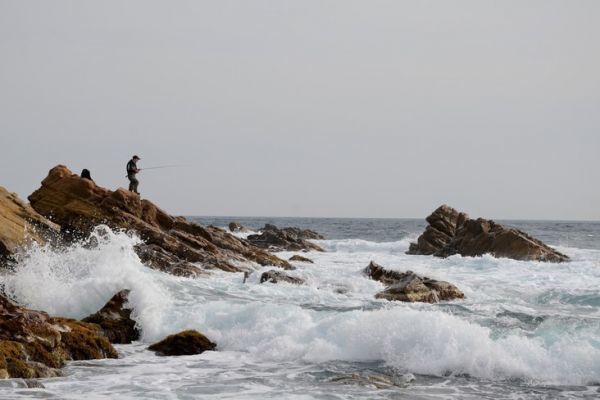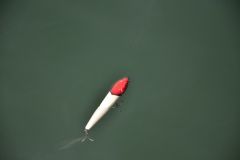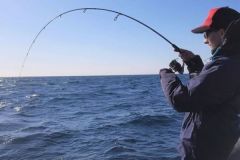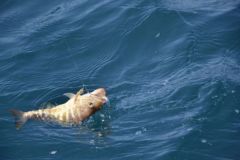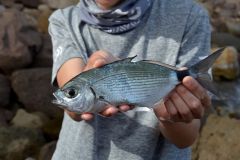Equip the fisherman
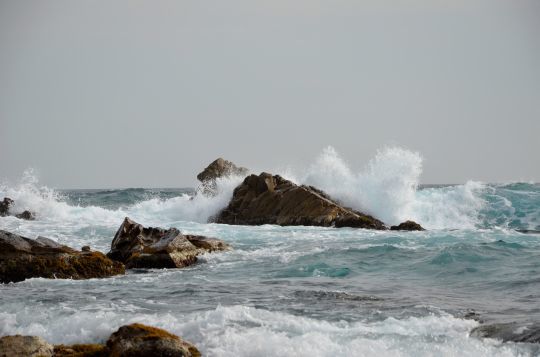
The first thing you need to worry about before tackling rocky shore fishing in rough seas is your own equipment. Being able to stay dry throughout the session, especially in winter, is essential to avoid hypothermia.
Waders are therefore ideal for this type of situation. However, you should definitely wear the wading belt, which prevents water from seeping in if you fall into the water. Without the belt, the legs of the waders can fill up very quickly and add considerable weight preventing you from swimming or pulling yourself up onto the shore. When wearing the belt, water will not be able to enter and your legs will float tremendously thanks to the air trapped inside.
If you are alone, wearing a life jacket is highly recommended, especially if your spot is steep and getting back on the rocks after a fall in the water would be too dangerous with the waves.
Essential accessories
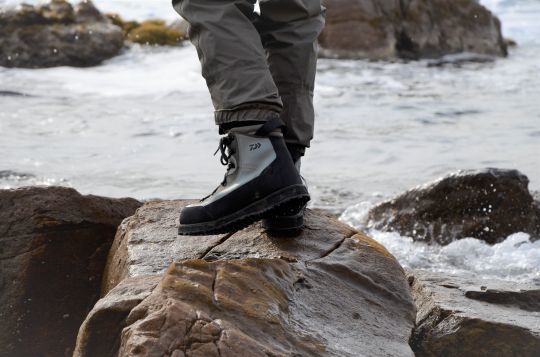
Fishing in rough seas is not simply a matter of enjoying the elements; the primary objective is to catch fish. No matter what technique you use, a landing net with a long handle is necessary to avoid having to get close to the water's edge to retrieve a fish.
Also consider waterproofing your means of communication, the phone, so that you can warn someone in case of a problem. Waterproof pockets exist, they work very well and cost almost nothing. A good waterproof jacket is also recommended to avoid being soaked by the spray.
Choose your shoes wisely, they will be your link to the rocks and should be able to hold you firmly. Preferably, choose soles made of a soft material that will be able to take the shape of the ground and thus better hold on to it. Obviously, good crampons are recommended to avoid slipping when the rocks are wet or if you walk in water.
Taking precautions
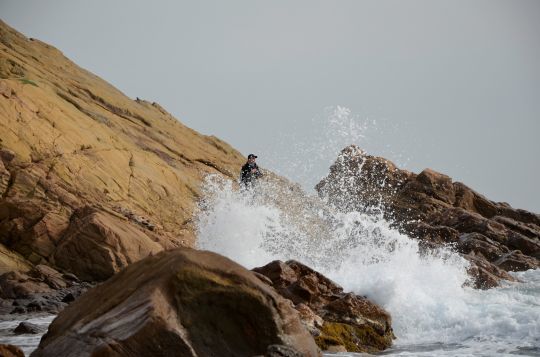
Fishing on rocky shores when the sea is rough must be done intelligently. Although the fish are less likely to spot us because of the foam on the water, this is not a reason to get too close to the shore.
Waves come to the shore in series, which means that a spot that looks protected is not necessarily protected all along the session. A wave bigger and more powerful than the others can arrive at any time. It is thus necessary to know to take its distances with the edge to avoid being surprised.
If you have the opportunity, wait a few minutes before entering an area to check the maximum height that the waves can reach and stand a few meters back from this demarcation. Remember that safety comes first, the biggest fish in the sea is not worth a fall in a rough sea.

 /
/ 